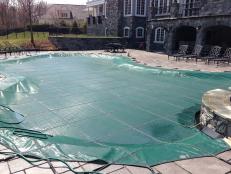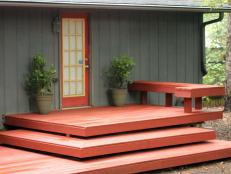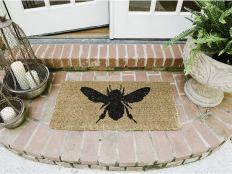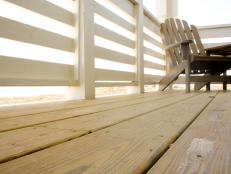Is Your Deck Ready for Spring Weather?
Try these helpful tips for a post-winter inspection, cleaning and priming.


Image courtesy of the MOSAIC Group
When spring arrives it’s time to get your deck ready for the warm weather. But before you do anything, you should consider these helpful tips on inspection, cleaning and maintenance from Rick Goldstein, architect and co-founder of Atlanta's MOSAIC Group [Architects and Remodelers].
If you have a wood deck that is natural redwood, cedar or a pressure-treated wood, it is important to do a thorough visual inspection first to make sure there is no damage after the winter season. You need to check the entire structure including the underdeck for rot, mildew or nails that have popped out. “We’ve seen over wintertime that railings can get loose,” Goldstein states. “If you live in a cold climate where lots of snow has accumulated there can certainly be some structural issues with the deck with all of the snow loads they’ve held over the course of the winter. And the freezing and thawing of ice creates a bit of havoc on wood decks.”
Wood rot can appear in a variety of ways. “The signs I would look for,” Goldstein notes, “are soft spots on a deck, discoloration, splintering of the wood and where things have gotten loose. Most areas are not going to pose any life threatening issues except potentially at the structure and deck connection. If you see rot there, it’s time to bring a professional in to double check it.”
A pressure-treated pine deck might be less susceptible to damage than a natural redwood deck, but it is still vulnerable to rot. One reason for this is because the companies that make pressure-treated wood manufacture one type for ground contact and one which is used for above ground construction and not rated for ground contact. If the latter type touches the ground and is exposed to a lot of moisture, it is susceptible to rot. This is why it is especially important to double check stair stringers (the main structure supports on stairways) and ground posts in the event that the builder used non-rated pressure-treated wood.
Other damage can be caused by the actual chemicals in the pressure-treated wood. Although manufacturers continue to refine and improve the process for making pressure-treated wood, some of the chemicals used in pressure-treated products from ten years ago “were so corrosive that they would just eat through the screws, nails and bolts and leave the decks structurally impaired.”
If you do find wood rot, it might be repairable depending on the scale of the rot. If the damage is only on the edges of the wood boards, you can simply have the ends of the boards cut off and replaced with small sections of new wood. It might not look visually appealing on an aesthetic level but it’s a safer solution. Of course, if the rot is more extensive, you might need to replace part or all of the structure.
Mildew on wood decks can also accumulate over the wintertime but is easier to treat than wood rot. Some people use bleach to clean mildew but this is not recommended because it is a caustic solution that harms plants and can discolor and damage sidings, paint and walkways. The ideal approach is to use a wood cleaner that is recommended by the manufacturer of your deck stain. You also need to exercise caution if you plan to pressure wash your deck. If the hose nozzle is set at too high a pressure, you can actually damage the deck’s wood fibers.
Once you have thoroughly cleaned the surfaces of your deck, you need to put a new stain or sealer on the wood to protect it. How often you need to repeat this process depends on where the deck is situated on your property. “Is it in the shade or in the sun?,” Goldstein asks. “The UV rays of the sun will actually deteriorate a deck finish much more quickly than if it’s in the shade. You can see that happening when the wood dries out and starts to crack. Most wood finishes and stains recommend a one and a half to three year cycle. Where most people go wrong is they’ll wait four or five years and then the damage has been done. You can’t undo it. Some of these things are no different for a composite deck. They also need to be cleaned, just not stained or sealed.“
If you are a DIY type and plan to perform your own deck repairs or want to use a local builder or contractor, you need to be aware of any new deck building codes in your area. According to Goldstein, this is starting to have a major impact on the industry. There has been a wave of code changes across the country that apply specifically to decks and deck building. “For example, Georgia instituted a new deck code,” Goldstein mentions, “that is very, very specific. I think the problem and issue that you’re going to see is that most people think they can build a deck because it’s not terribly technical. If they’re not aware of these new deck codes, that’s where all of the problems come in.” To make sure you are building or repairing your deck to the required standards, it is imperative that you follow the designated deck building codes for your area or hire a builder who enforces these standards.
If you follow all of the above tips, you are certain to get the most out of your deck and enjoy it for many years to come.













































